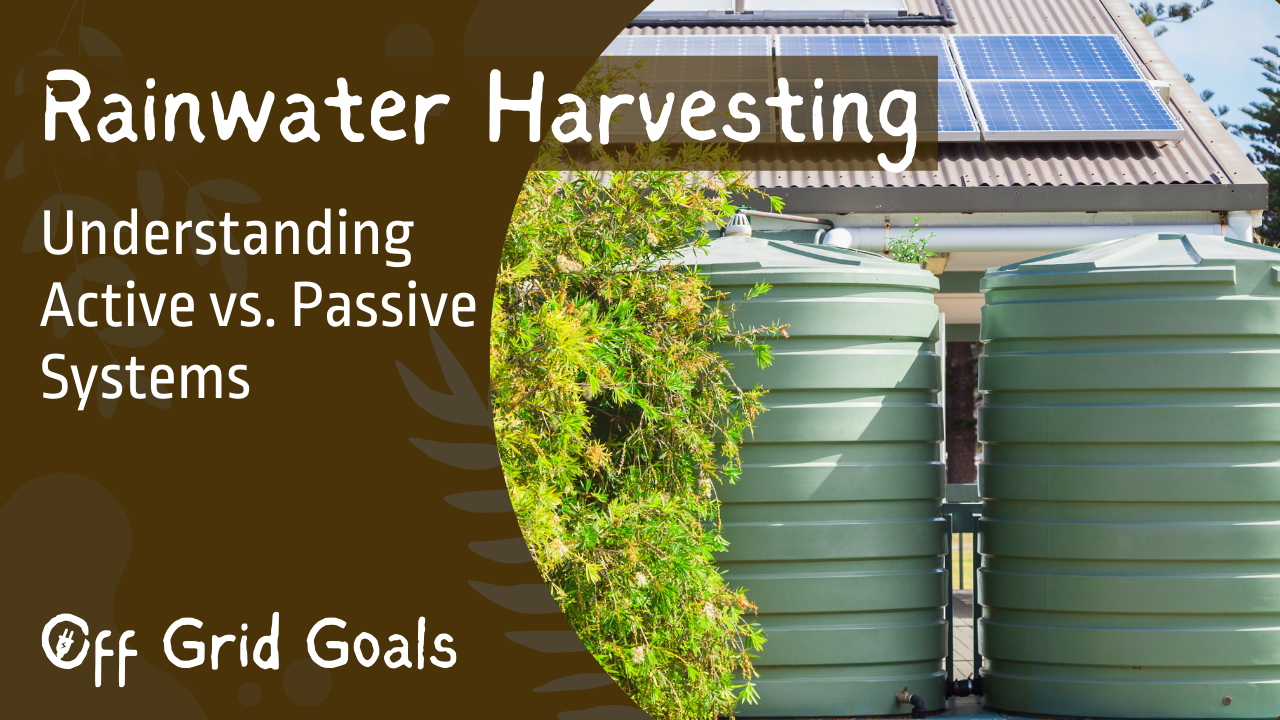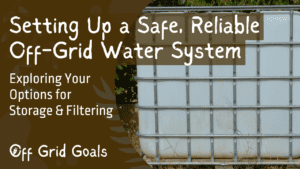There are two main types of rainwater harvesting systems: passive and active. Let’s look at the options for each. You’ll most likely want to combine these to maximize your rainwater harvesting and uses.
Passive Systems: Going with the Flow
Passive rainwater harvesting systems are all about simplicity and going with the natural flow – literally! These systems rely on gravity to collect and store rainwater without the need for pumps or mechanical devices. Here’s how they work:
Rain Barrels: Picture this – a charming row of rain barrels lined up beneath your gutters, eagerly awaiting the next rainfall. That’s the essence of a passive rainwater harvesting system! Rainwater flows down from your roof, through the gutters, and into the barrels, where it’s stored until you’re ready to use it for watering your garden or washing your car. For a completely passive system you can add a spout to the bottom of your collection barrels to easily access your water.
Swales and Berms: For larger-scale harvesting, swales and berms are like nature’s own water highways, guiding rainwater across your landscape to where it’s needed most. These shallow trenches and mounds are strategically designed to capture and channel rainwater, allowing it to slowly percolate into the soil and replenish groundwater supplies.
Rain Gardens: Who says rain can’t be stylish? Rain gardens are a beautiful and functional way to harvest rainwater while adding a splash of color to your landscape. These carefully designed gardens feature native plants and porous soil that soak up rainwater like a sponge, reducing runoff and preventing soil erosion.
Active Systems: Pumping Up the Fun (and Safety)
Active rainwater harvesting systems take things up a notch by adding a bit of mechanical magic to the mix. These systems use pumps, filters, and other equipment to collect, store, and distribute rainwater with precision and efficiency. Here’s what sets them apart:
Submersible Pumps: These handy devices sit at the bottom of your rainwater storage tank, ready to spring into action at a moment’s notice. When it’s time to water your garden or fill up the kiddie pool, the pump kicks into gear, delivering rainwater right where you need it.
Filtration Systems: Filtration systems remove debris, sediment, and other nasties from collected rainwater to ensure it’s clean and safe for use. From simple mesh screens to high-tech UV sterilizers, there’s a filtration option for every water warrior.
Pressurized Distribution: Want to water your plants with the finesse of a seasoned gardener? With pressurized distribution systems, you can! These setups use pumps to pressurize rainwater and deliver it through sprinklers, drip lines, or hose attachments, giving you precise control over your watering efforts.
If you’re planning to use your rainwater for drinking or cooking be sure you look into filtration options! Mix and match the passive and active elements to build your perfect rainwater collection system!



















